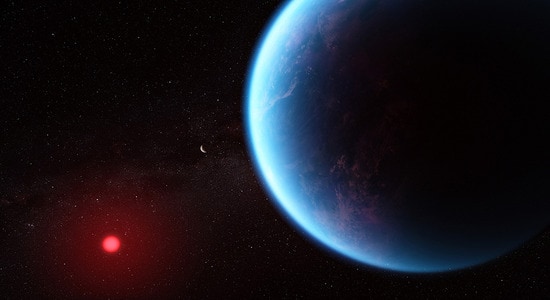What will be the fate of our Sun? After it exhausts all its nuclear fuel, how will it die? And what about the fate of the remaining planets of our Solar System? Astronomers have used data from James Webb Space Telescope (JWST) to forecast these scenarios that are likely to occur billions of years from now. The JWST data includes images of what appear to be two gas giant exoplanets revolving around white dwarf stars. The discovery was led by Susan Mullally of the Space Telescope Science Institute in Maryland, in the United States.
“Let me introduce you to two new candidate exoplanets found with JWST’s MIRI: WD 1202-232 b and WD 2105-82 b. These candidates are cool, billion year old Jupiter-like exoplanets that are likely polluting the atmospheres of their white dwarf host stars,” Ms Mullally said in a post on X, which she followed up with several other posts.
Let me introduce you to two new candidate exoplanets found with JWST’s MIRI:
WD 1202-232 b and WD 2105-82 b.https://t.co/IGljXtW4OK
These candidates are cool, billion year old Jupiter-like exoplanets that are likely polluting the atmospheres of their white dwarf host stars. pic.twitter.com/g6mnMD6tEc
— Susan E. Mullally (@mustaric) January 25, 2024
“Assuming they are planets, they have masses of a few Jupiter masses, are in orbits similar to what Jupiter and Saturn will be after the Sun turns into a white dwarf. Also they are similar in age to our solar system at 1 and 5 billion years,” she further said.
The study has been published in The Astrophysical Journal Letters, and carries fabulous images of the two exoplanets. It has been made possible by JWST’s unprecedented capabilities, which can detect even the faintest of light emitted by far away planets.
“If confirmed, these would be the first directly-imaged planets that are similar in both age and separation to the giant planets in our own Solar System, and they would demonstrate that widely separated giant planets like Jupiter survive stellar evolution,” Ms Mullally said in the study.
Over 5,000 exoplanets have been confirmed so far, most of those detections are indirect. Astronomers observe the effects the exoplanet has on its host star, and infer its properties based on those effects.
This is the first time that scientists have captured and analysed direct images of these very far away planets.
The study mentions the exoplanets orbiting two different white dwarf stars named WD 1202-232 and WD 2105-82 at distances of 34 and 53 light-years from Earth, respectively. They are believed to be between 1 and 7 times the mass of Jupiter.
Scientists claim if the exoplanets are the same age as their host stars, it would mean that exoplanets with distances similar to those of the outer planets in the Solar System can survive the violent deaths of their stars and remain in orbit.
This fate predicts what will happen when the gas giants of our Solar System when the Sun eventually burns out.
The team has suggested follow-up studies to gather more data and pin down the nature of their fascinating find.














